Welcome to Countdown to CHIRP, a wonderfully nerdy blog series about the writing process behind my February 2020 MG novel, CHIRP. Here’s a little about the book from Bloomsbury, so you’ll understand what I’m talking about when I share all the nitty-gritty writing and revision details…
 When Mia moves to Vermont the summer after seventh grade, she’s recovering from the broken arm she got falling off a balance beam. And packed away in the moving boxes under her clothes and gymnastics trophies is a secret she’d rather forget.
When Mia moves to Vermont the summer after seventh grade, she’s recovering from the broken arm she got falling off a balance beam. And packed away in the moving boxes under her clothes and gymnastics trophies is a secret she’d rather forget.
Mia’s change in scenery brings day camp, new friends, and time with her beloved grandmother. But Gram is convinced someone is trying to destroy her cricket farm. Is it sabotage or is Gram’s thinking impaired from the stroke she suffered months ago? Mia and her friends set out to investigate, but can they uncover the truth in time to save Gram’s farm? And will that discovery empower Mia to confront the secret she’s been hiding–and find the courage she never knew she had?
In a compelling story rich with friendship, science, and summer fun, a girl finds her voice while navigating the joys and challenges of growing up.
So… I’m not actually going to talk about writing CHIRP in this post. I’m going to talk about planning. And time management for writers.
When I started working on this novel, I was also juggling a handful of other upcoming writing projects. I keep a bullet journal (which I blogged about a while back), and that helps me to manage both daily tasks, monthly goals, and longer term projects. It’s especially helpful when I’m working on multiple project at once and trying to keep track of various deadlines. Here’s a look at some of my monthly tasks from April 2018…
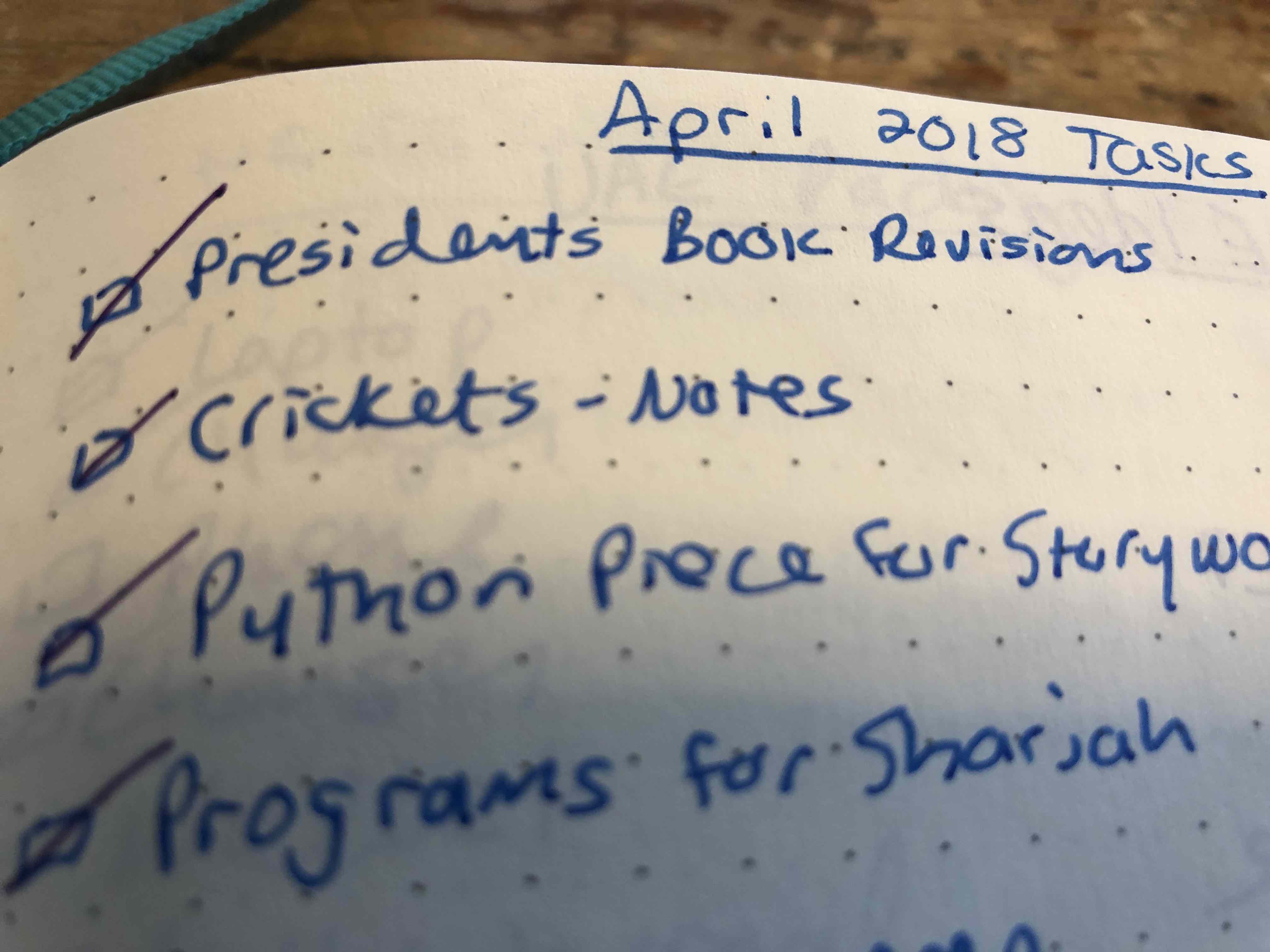
That month, one of my goals was to organize all of my cricket notes and other brainstorming for CHIRP so that I could get started on a plan for my rough draft. I also needed to wrap up final revisions (a few more line edits!) on my picture book, THE NEXT PRESIDENT, which comes out with Chronicle in March 2020. Also? I’d been researching invasive Burmese pythons in Southwest Florida – following curiosity again! – and had pitched an article about that to Scholastic Storyworks magazine, so I needed to finish that up.
Travel mixes in with my writing deadlines, too, which is why you see “Programs for Sharjah” on this list. Before I left on a trip to the Sharjah Children’s Reading Festival in the United Arab Emirates later that month, I needed to prepare the presentations that I’d give at the festival and at schools in Sharjah and Abu Dhabi.
By August 2018, I was using my bullet journal to set very specific goals for completing that very first (and very rough!) draft of CHIRP.
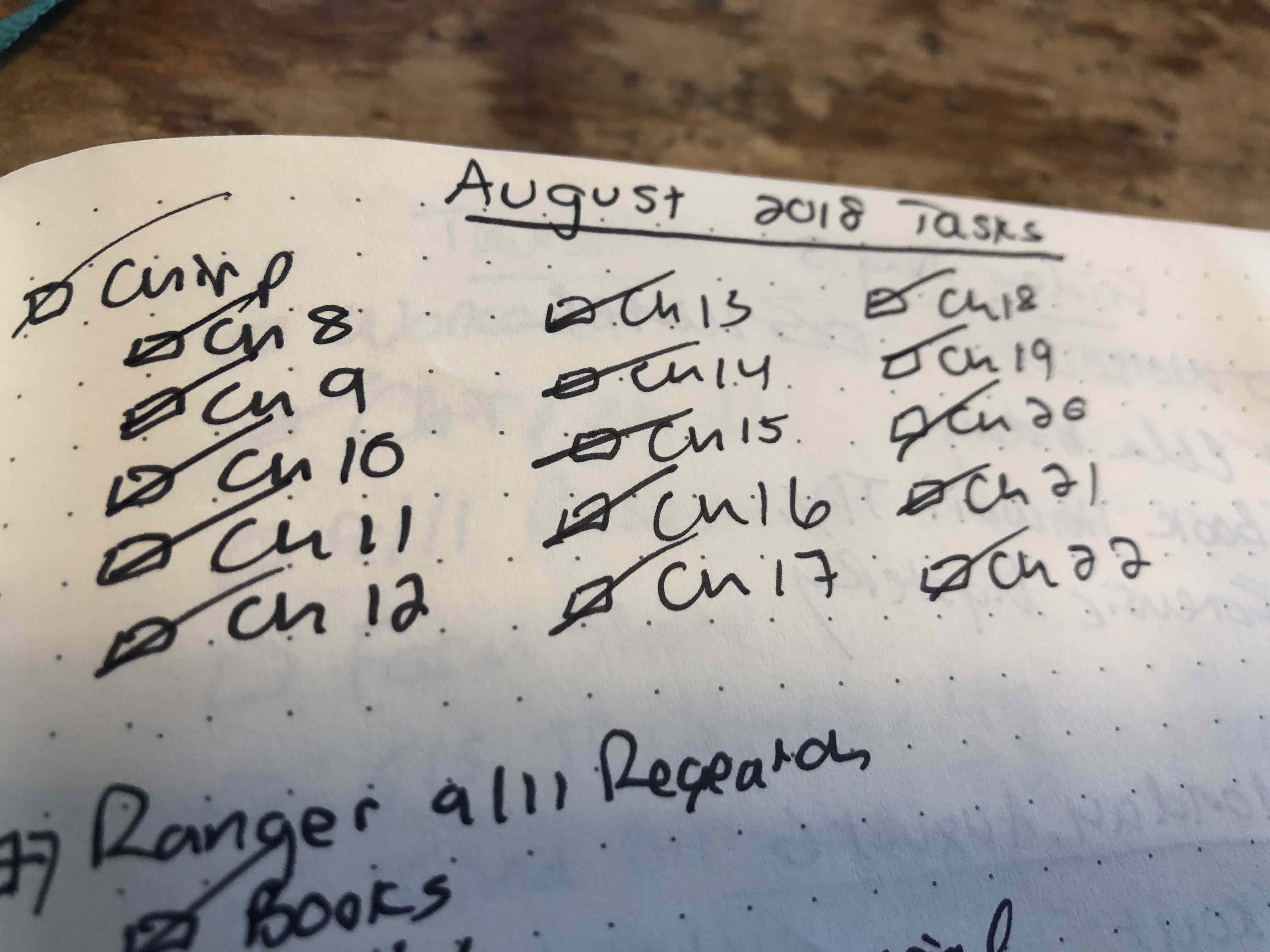
When I’m fast-drafting, I’ll often aim for a chapter each day, so this added up to fifteen really intense writing days in August. The other writing days that month were devoted to starting my research for Ranger in Time #11: Escape from the Twin Towers, which meant a lot of library time as well as a trip to the National September 11 Memorial and Museum in New York City later in the month.
I put daily to-do lists in my bullet journal, too. Everything in my life mixes together in those – the daily writing jobs, my fitness and water-drinking habits (writing it down helps!), family events like my daughter’s track meet, volunteer work I do in the writing community, like maintaining my author Skype list, and connecting with a writer friend.
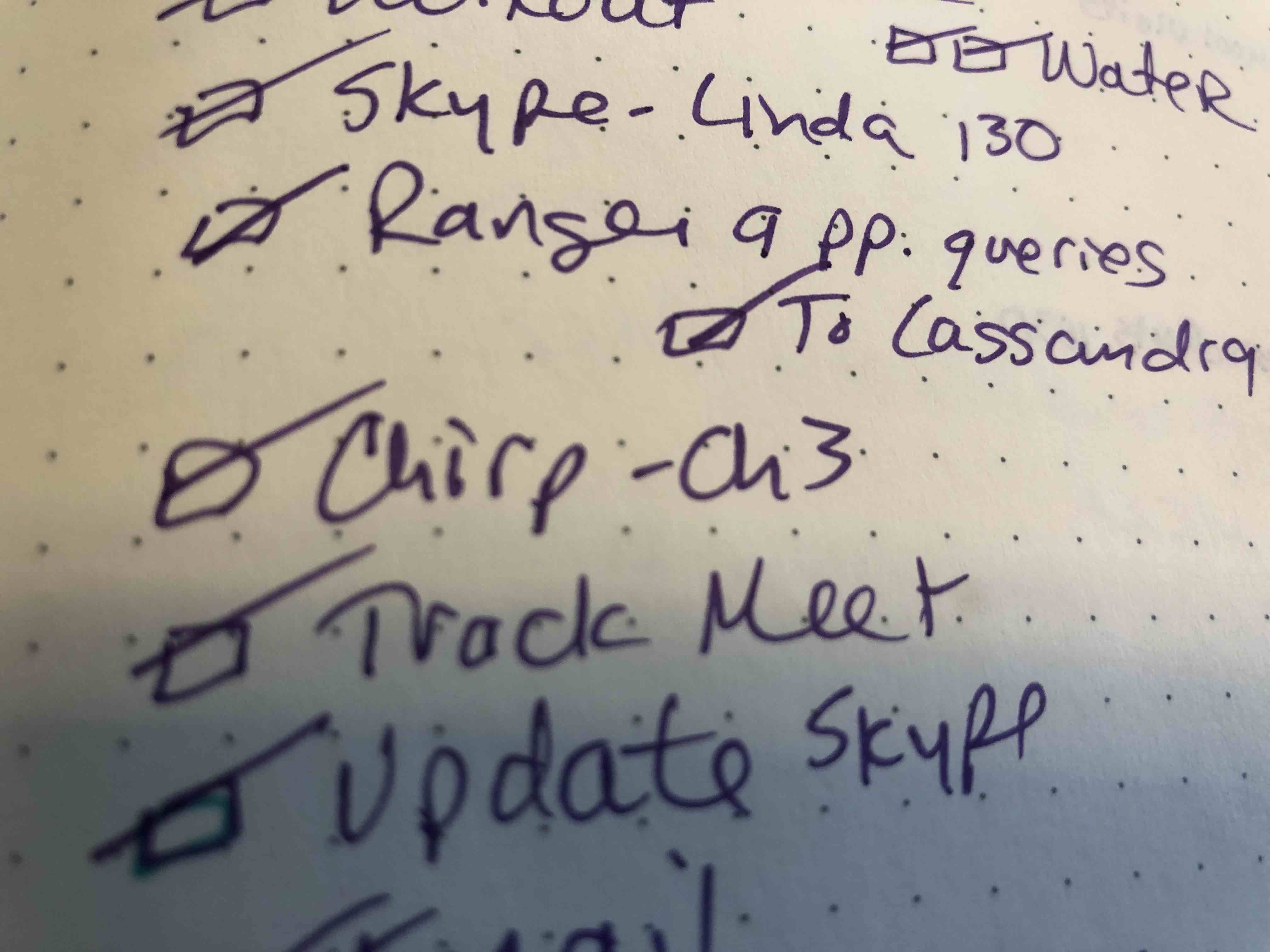
Mixed in with all those to-do lists are pages of brainstorming and notes, like this one where I was imagining my main character, Mia, unpacking boxes in the new house and trying to decide what to keep and what to shove in the closet.
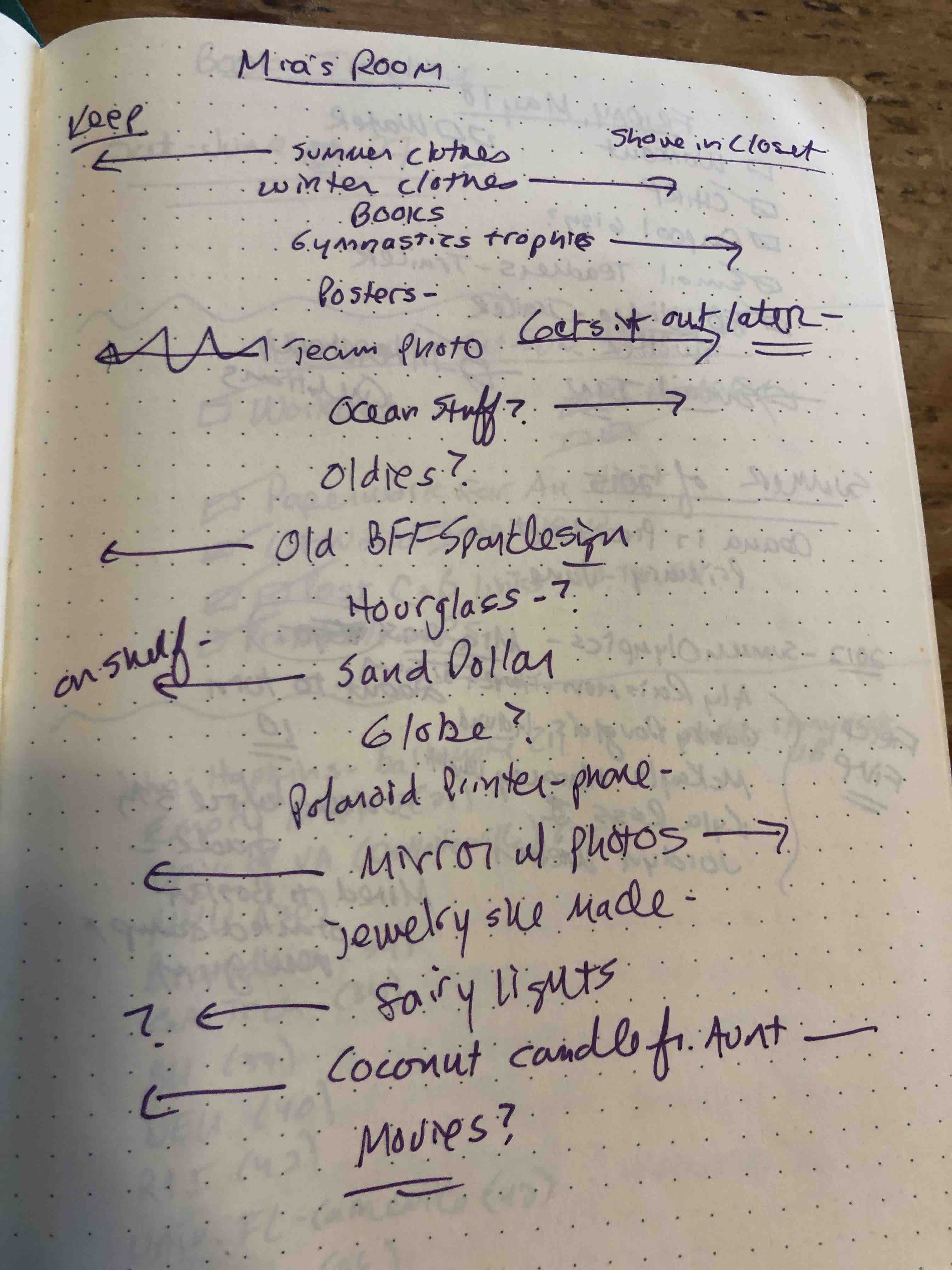
Is this a weirdly specific brainstorming tool? Definitely! But it was the exact tool I needed to make some decisions about Mia’s character and where she was in that summer she moved.
I also keep big project charts in my bullet journal – a trick that my brilliant author friend Tracey Baptiste taught me – where I keep track of all the progress and milestones on each project. Here’s what my master project chart looked like when I’d finished up CHIRP.
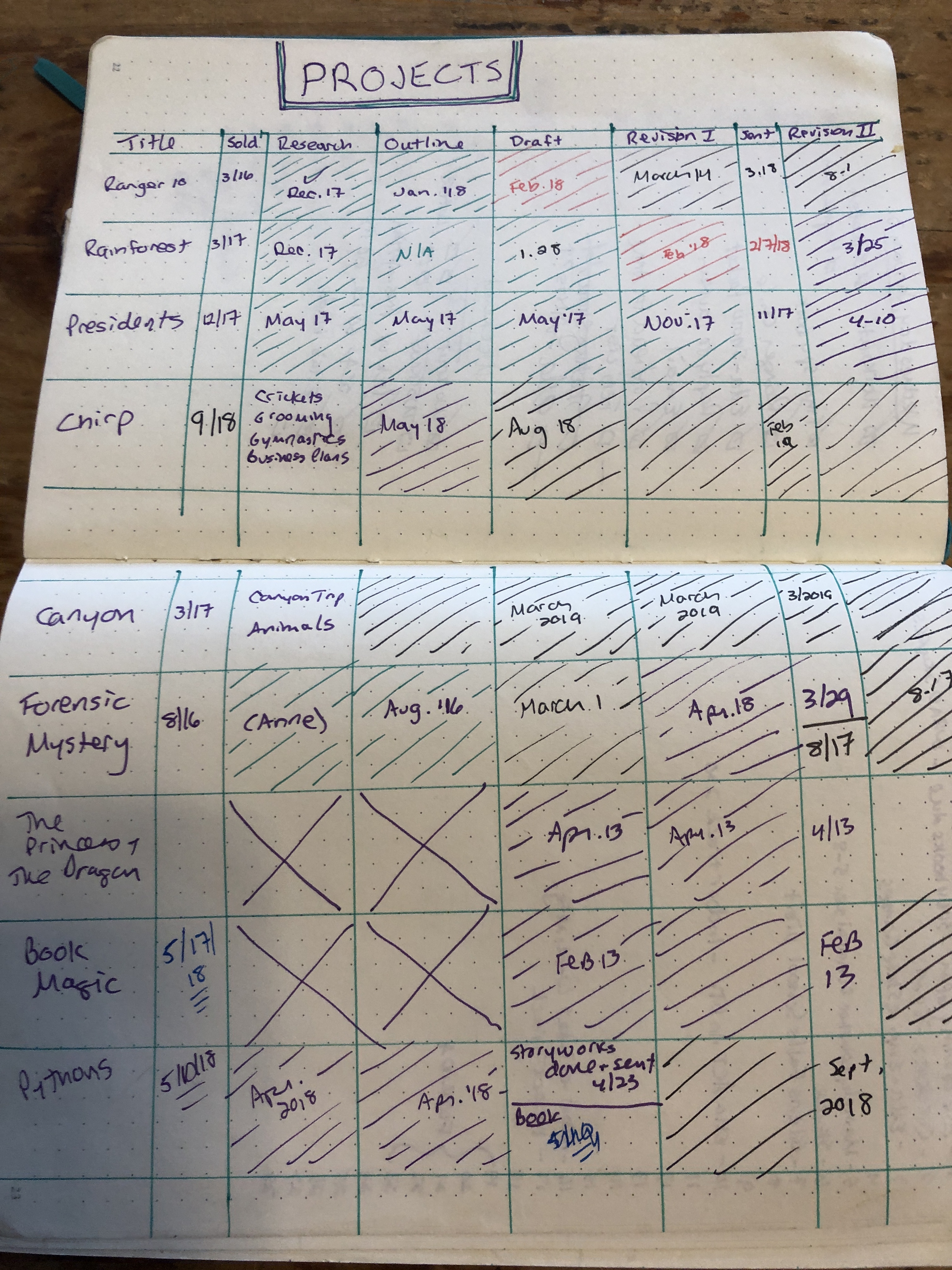
I use these charts to keep track of progress for each project. So it includes the project title (or working title), when it sold to a publisher, and when I completed my research, outline/planning, draft, Revision I (which includes the 3-4 revisions I usually do before I send to my editor), the date I sent the revised manuscript, and finally, the completion of the rest of the revisions that happen after I get my editorial letter and notes. (There are other steps in the process that aren’t on here – copy edits and reviewing page proofs, etc. – but your chart can only be so big, and those tend to be smaller jobs, so I don’t include them here.)
By now, you might be wondering what all these time management tools are doing in a blog series that’s supposed to be about the writing process. Fair enough… The truth is, they’re not really writing, but they’re an essential part of my process because without them, I couldn’t clear the brain space to get my actual writing done. For me, getting everything in a plan on a page frees me to let go of those logistical things so I can be creative and really immerse myself in a character’s world. And that’s what happens once I start drafting – the subject of next week’s post!
For now, I’d love it if you’d consider pre-ordering CHIRP. If you do that through my local indie, The Bookstore Plus, I’ll personalize and sign your copy to be mailed out on release day. And wherever you pre-order, Bloomsbury will send you a special gift – a CHIRP poster and a class set of bookmarks to share! Details on that are here.
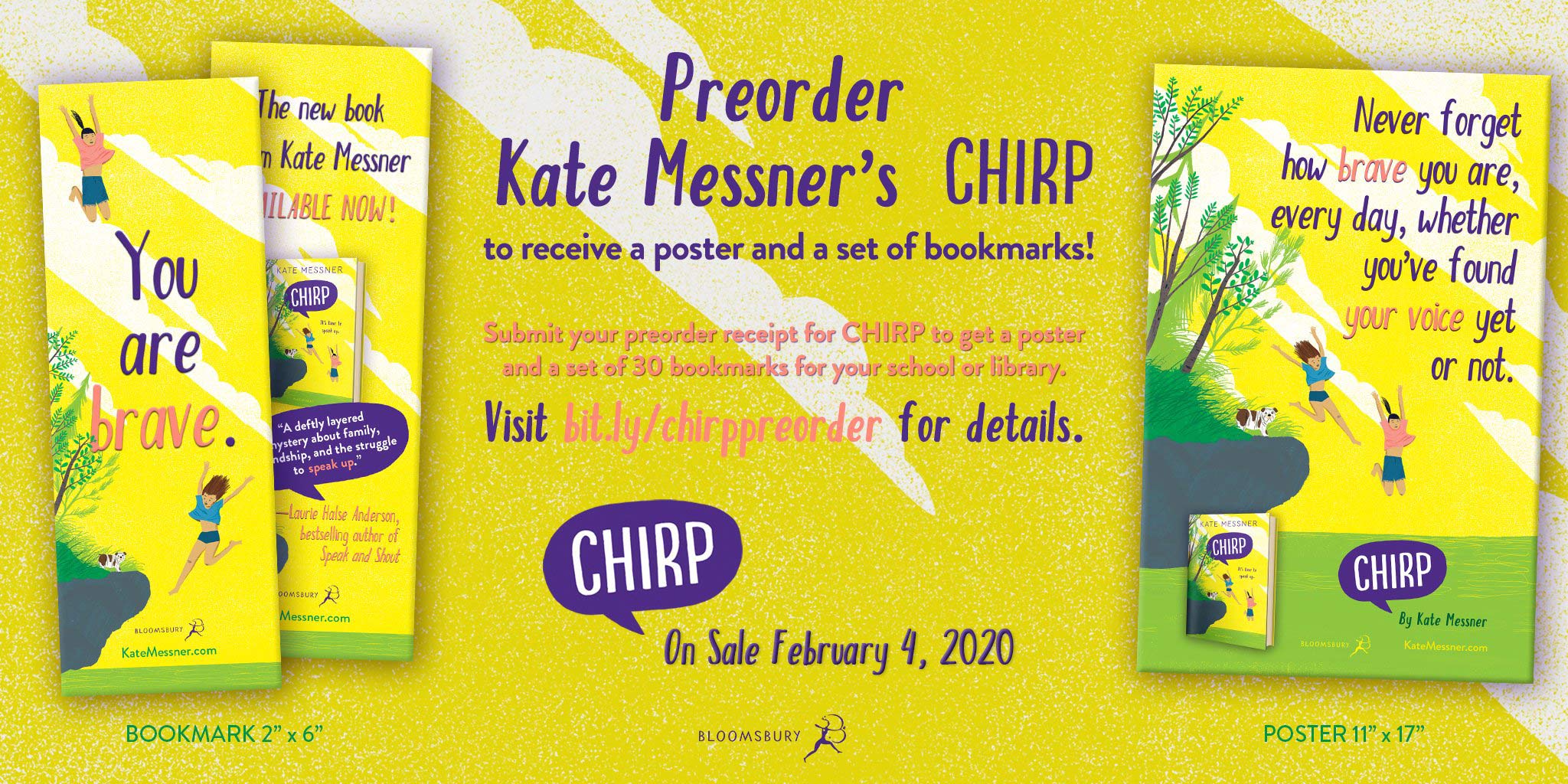
Thanks so much for taking the time to read about CHIRP. I’m so hopeful that this book will find the readers who need it, and I’m grateful for the early praise it’s garnered from readers and reviewers alike…
“Kate Messner strikes the perfect balance of joy, pain, and strength in this deftly layered mystery about family, friendship, and the struggle to speak up.” – Laurie Halse Anderson, bestselling author of SPEAK and SHOUT
“Chirp is so many things: a mystery, a family story, and a story of the power of friendship. It’s about learning to speak out when it seems the whole world would rather you shut up. Sure to be passed from kid to kid to kid” – Laura Ruby, National Book Award Finalist and author of the York Trilogy
“Once again, Kate Messner has written a book that will be a dear and important friend to her readers. A loving and compelling ode to the joy of friendship, the many kinds of strength, and the everyday bravery of girls.” – Anne Ursu, author of THE LOST GIRL
“Messner deftly weaves together myriad complex plot threads to form a captivating whole. . . . Rich, timely, and beautifully written.” – Starred Review, Kirkus Reviews
“Messner addresses #MeToo themes authentically and with care as her story moves toward empowerment: Mia displays fear and confusion alongside a hope to reclaim the strength she once felt as a gymnast. Layering mystery elements, strong and myriad female characters, and a poignant analogy involving chirp-less female crickets, Messner gently guides Mia on a journey of resilience that both comforts and inspires.”
– Starred Review, Publishers Weekly
“Messner honors middle graders by exploring important, relevant issues at their level of understanding. This book will prompt discussions of gender inequality, consent, and sexual abuse. A must purchase.” – Starred Review, School Library Connection





2 Replies on “Countdown to CHIRP: Writerly Time Management (It’s all about the charts, baby…)”